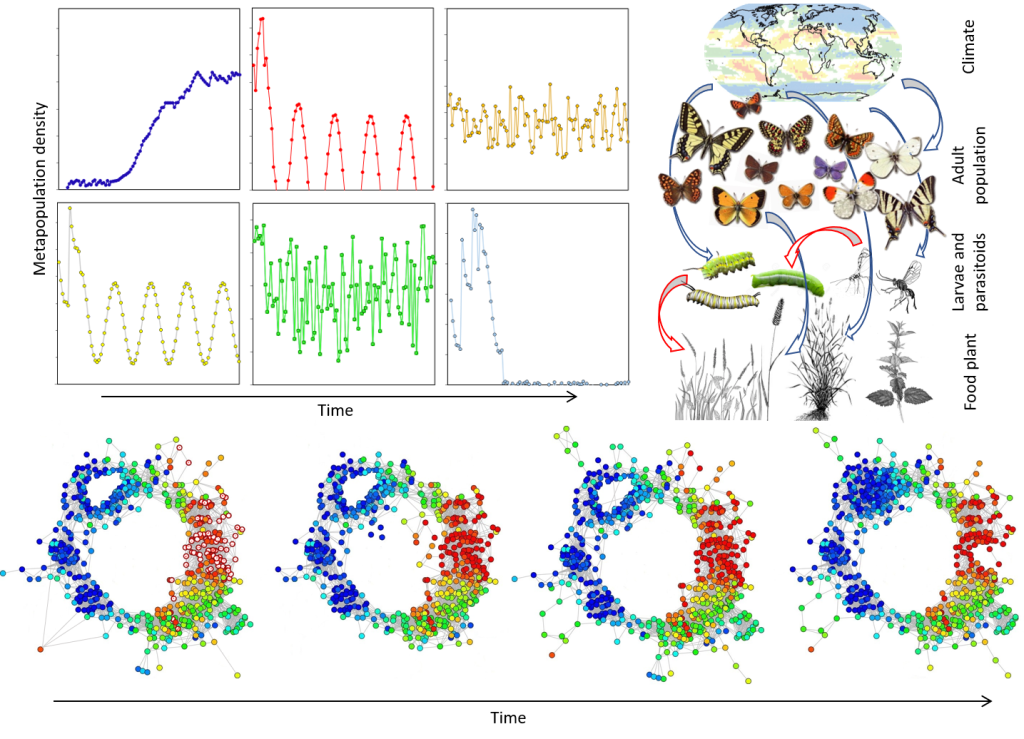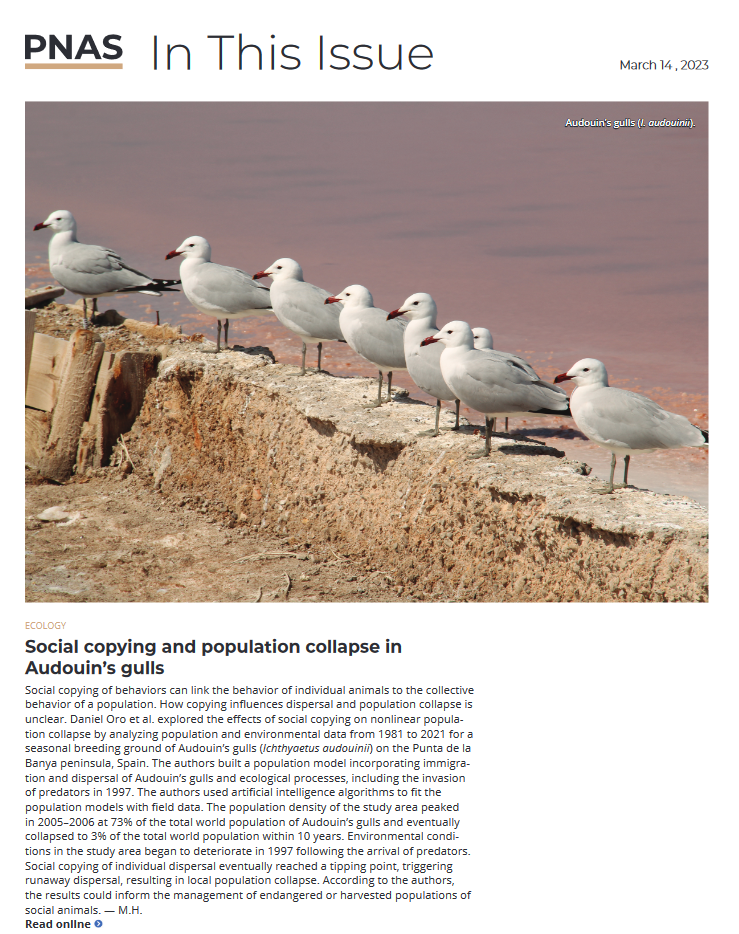Special issue in Biological Conservation
https://www.sciencedirect.com/journal/biological-conservation/special-issue/10DNPT6S9QV
Edited by
- Sonia Kefi
- Pierre Gaüzère
- Daniel Oro
Ecology and conservation biology have historically relied on the equilibrium paradigm and the “balance of nature” metaphor. Nevertheless, ecological systems are inherently changing in space and time, especially under the agents of global change. This has set a scientific challenge, e.g. the consideration of transient dynamics, stochasticity and disequilibrium, where populations, communities and ecosystems are decoupled from environmental conditions. While a non-equilibrium paradigm has pervaded recent ecological research, conservation biology has seldom considered the new paradigm and its consequences.The aim of this special issue is to address several questions, including:How may we combine various methods to identify that a given study system is out of equilibrium?How can a non-equilibrium perspective be incorporated in biodiversity assessment ?How can we adapt conservation strategies to take into account non-equilibrium dynamics?Those questions – along with many others – require a scrutiny if biological conservation wants to fully integrate non-equilibrium perspectives in the near future.




